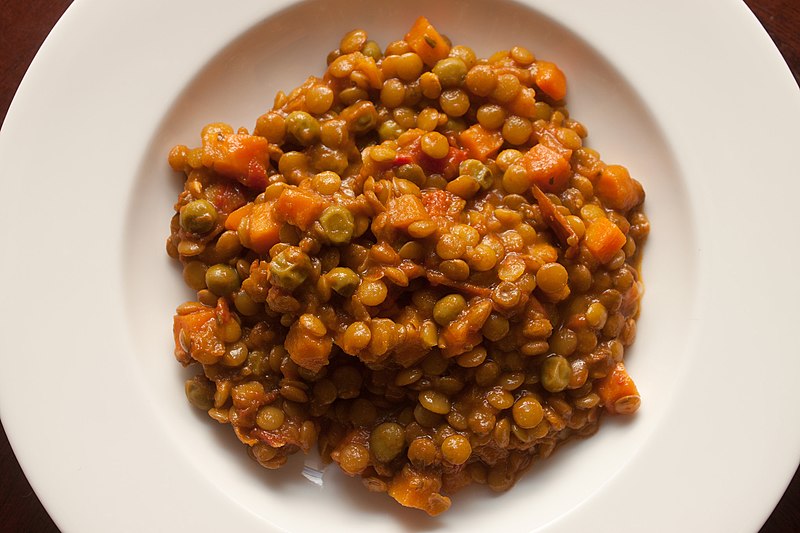Downloads:

General information
Variations
Keywords
Legumes, broth, pasta, rice, meat, seafood
Level
General information
Recipes based on legumes are to be found in all traditional cuisines; recently, the trend to environmentally friendly and culturally attentive farming led to the search and valorisation of crops long forgotten.
Traditionally, legumes are used to concoct hearty soups, as main ingredient or added to a mix of vegetables.
Legumes are used fresh or dried; in this case they are usually let to soak in water for one night before being boiled and cooked.
Most soups are based on a simple recipe: olive oil, onion or garlic gently softened; legumes are added (fresh or soaked if dried), with herbs and other ingredients (tomatoes, tomato paste, different vegetables, broth).
Often also pasta or rice are added.
Variations
Based on the season and on the region, legumes soups are lighter or richer: in winter or in Northern regions meat and/or animal fat are added to make the soup more earthy.
Each region has different traditional recipes elaborated on the basis of the main procedure.
Some traditional combinations:
- Pasta e ceci (Chickpeas and pasta soup, Italy): Chickpeas, garlic, rosemary, pasta.
- Potajes (legumes and vegetables, Spain); a richer and heavier version is Puchero, where animal fat and meat are added
- Feijoada de mariscos (beans and seafood soup, Portugal)
- Ertwensoep (dried peas, meat, Belgium and the Netherlands)
Cassoulet (white beans, pork meat and sausages, France)
Description
Recipes based on legumes are to be found in all traditional cuisines; recently, the trend to environmentally friendly and culturally attentive farming led to the search and valorisation of crops long forgotten.
Traditionally, legumes are used to concoct hearty soups, as main ingredient or added to a mix of vegetables.
Legumes are used fresh or dried; in this case they are usually let to soak in water for one night before being boiled and cooked.
Most soups are based on a simple recipe: olive oil, onion or garlic gently softened; legumes are added (fresh or soaked if dried), with herbs and other ingredients (tomatoes, tomato paste, different vegetables, broth).
Often also pasta or rice are added.
Based on the season and on the region, legumes soups are lighter or richer: in winter or in Northern regions meat and/or animal fat are added to make the soup more earthy.
Each region has different traditional recipes elaborated on the basis of the main procedure.
Labels
Benefits
Legumes are a very good source of vegetable proteins; when combined with cereals (rice, pasta, etc) the value of proteins is similar to that of animal proteins.
They are high in minerals, especially potassium, iron and phosphorus.
A dish based on legumes can be considered a complete meal, thanks to its nutritional values.
Choosing local products is an environmentally friendly option.
Representative Products
All legumes, fresh or dried.
Risks
The main risk concerning dried legumes refers to conservation: it is important to keep them in a dry and cool place, and follow the indications of the labels.
Further references
https://www.thekitchn.com/from-white-bean-squash-to-chickpea-stew-10-bean-and-legume-soups-178893
http://www.dvo.com/recipe_pages/betty/LEGUME_BASICS.php
https://www.wandercooks.com/snert-dutch-split-pea-soup-erwtensoep/
https://www.thekitchn.com/cassoulet-22977832
 Play Audio
Play Audio

